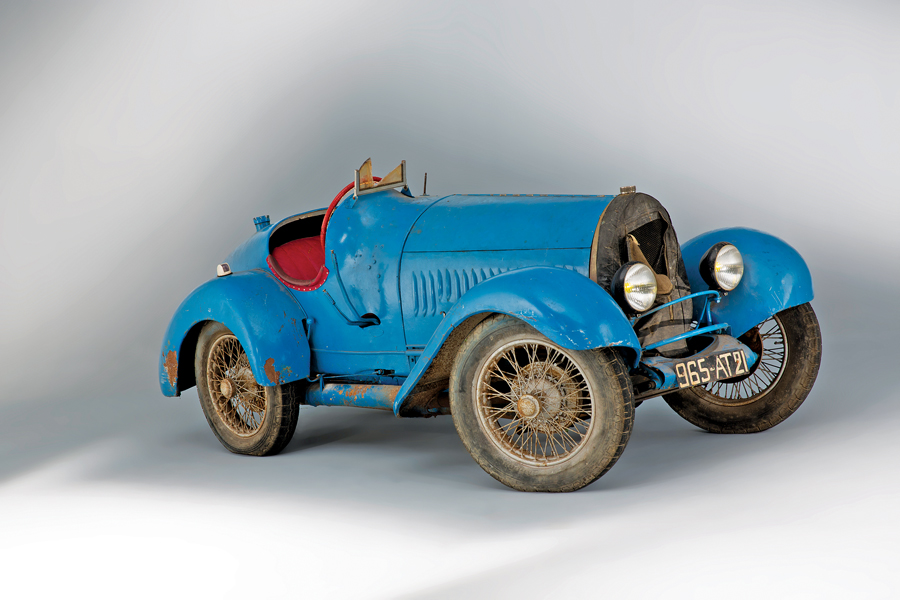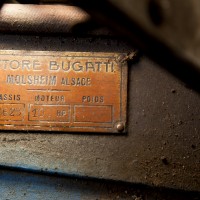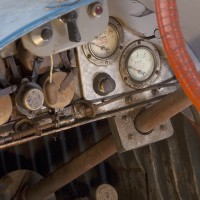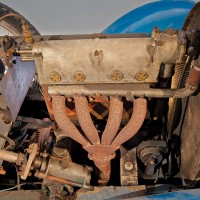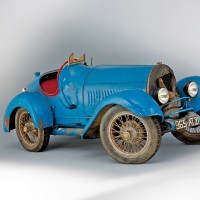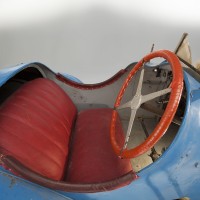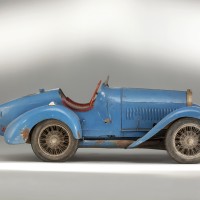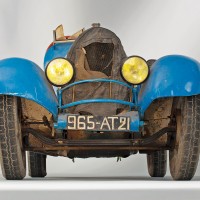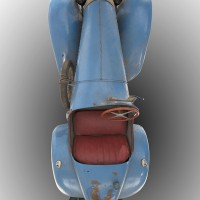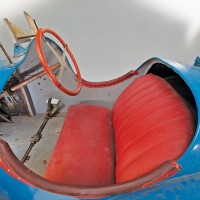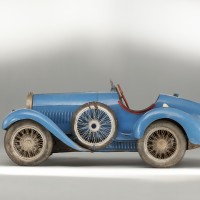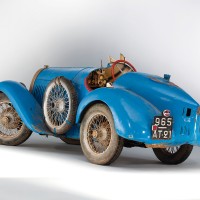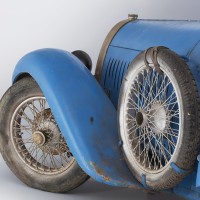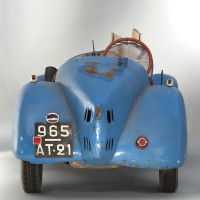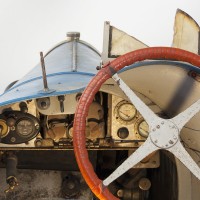SCM Analysis
Detailing
| Vehicle: | 1925 Bugatti Type 13 Brescia |
| Years Produced: | Type 13, 1910–25; Type 13 twin magneto, 1923–25 |
| Number Produced: | Type 13, 22 and 23, about 2,000; Type 13 twin magneto, 80 |
| Chassis Number Location: | Stamped on the engine mount casting |
| Engine Number Location: | Engine mount behind exhaust |
| Club Info: | American Bugatti Club |
| Website: | http://www.americanbugatticlub.org/ |
| Alternatives: | 1925 Alfa Romeo RL, 1924 Mercedes 6/25/40, 1924 Austin 7 |
| Investment Grade: | A |
This car, Lot 17, sold for $946,627, including buyer’s premium, at the Artcurial auction in Paris, France, on June 22, 2015.
Don’t be fooled. Yeah, it looks like a funny little toy, and with a six-foot-six-inch wheelbase and 45-inch track, it could fit inside an original Mini Minor, but the Type 13 Brescia Bugattis are easily among the greatest cars of the 1920s and arguably of all time. Strong words, I know, so let’s take a close look at this car.
From a genius
Born in Milan in 1881, the son of an artist and blessed with prodigious natural engineering talent, Ettore Bugatti was uniquely placed to be a part of the origins of the automobile. By the age of 16, he was working for a company that built tricycles, and at 18 entered his first race driving one of their tricycles that he had bought and modified to carry two engines. Although working without formal education, Bugatti was immediately successful. From the beginning he was committed to the idea that very small, light cars with modest horsepower were, at least for racing, far better than large, heavy ones.
In 1906, having designed a number of cars up to 50 hp, Bugatti set up on his own as a consulting engineer. He was living in Cologne and working primarily for the Deutz company. By this time, a clearly defined category of car, called “voiturette” (French “voiture” for automobile, “ette” for diminutive, so literally “little car”), with displacement under 1,500 cc had been established for racing and driving.
While designing larger-displacement cars for Deutz, Bugatti set about designing and building a voiturette for himself, literally in his cellar. His love of horses had introduced him to the concept of Pur Sang (pure blood, thoroughbred) and he expressed it with his new car. It used a 1,200-cc, 4-cylinder engine with an overhead camshaft and eight valves set into a truly tiny chassis with 4-speed transmission and shaft drive. It was completed in 1909.
The birth of the Type 13
In late 1909, Bugatti broke his ties with Deutz and set up his own factory at Molsheim. The first cars produced were the Type 13, a production version of the car he built in Cologne.
They were immediately successful, with five built in 1910 and 75 in 1911. The defining characteristic of the Type 13 — and of all subsequent Bugattis — was extremely high quality. While most small-car manufacturers of the time built cheap cars for people who couldn’t afford more, Bugatti built superbly designed and constructed tiny cars for people who could afford what they wanted but chose light and nimble. The 8-valve Type 13 was where the Bugatti mystique began to take form. When World War I came along, Bugatti shut down the operation and moved to Paris, where he designed aircraft engines for the duration.
When peace returned, Bugatti resumed building cars. The Type 13 design was upgraded with a little more displacement, a ball-bearing crankshaft, and four valves per cylinder. Nominally rated at 30 horsepower at 2,700 rpm, the new engine proved easily able to rev to 5,000 and beyond, so the real power was closer to 55 horsepower. In a car that weighed barely over 1,000 pounds with fuel and driver, this made for a formidable package, and the Type 13 — along with longer-wheelbase variants (Type 22 and 23) that allowed for more passengers, some luggage, and gentler road manners — continued until 1926.
In 1921, Bugatti Type 13s took the top four places in the Italian Grand Prix at Brescia, and as a result, they became known as Brescia Bugattis. Technically, only the short-chassis Type 13 cars are proper Brescias. The longer Type 22 and Type 23 are called Brescia Modifiė.
Great then and great now
The essential — even defining — characteristic of what are considered great cars is that they manage to retain their greatness over the years. Age does not tarnish the things that made them extraordinary.
Many people think that the Type 35 is the car that made Bugatti famous, but in reality, the Brescia created the mystique. I know a number of people who own or have owned Brescias, and each owner is almost obsessed with how much fun they are.
The engine is a delight, with amazing torque for its size and an eager willingness to do whatever is asked of it. The transmission is direct and easy to shift. With so little weight and skinny tires, the steering and handling are light and nimble (if a bit nervous on the short-wheelbase cars) to an extent unheard of in the bigger cars of the time. Although tiny, the Type 13 is an amazingly good road car. In the U.K., William I’Anson and his father drive his on long rallies and events and love every minute of it.
Because they are so small, the Brescia Bugattis will never carry the value of the larger, newer ones, but they are still extremely desirable because they tick all the boxes so well.
The problem, as is always the case in cars this old, is finding really good ones. In the years before and after the Great War, Bugatti produced roughly 2,000 Type 13, 22 and 23 cars, the largest production of any Bugatti, but the experts tell me that there are maybe seven really original and honest Type 13s left. Aside from the fenders (which are ugly, not original, not required and easily removed), our subject car is as good as it gets: It is one of the last produced (including front brakes!), original everything, known provenance, well maintained in its day and basically untouched since. As such, it commanded a substantial premium over “ordinary” Type 13s.
A top car brings top money
Though these cars seldom show up in auctions, there is a well-established private market among Bugatti specialists, and it shows quite a range of values depending on how good the car is.
A rebodied car on a shortened chassis — but with original mechanical bits — is worth around $400,000, while an original restored Brescia Modifiė (longer chassis) will bring about $650,000. A restored-but-excellent 1920s Type 13 will run about $750,000. From there to our subject car is quite a jump, but this one was the best — quite possibly the last truly unmessed-with, preservation-class Brescia Bugatti in the world.
Whoever wanted it was going to have to step up, and somebody did. I would say bravely but fairly purchased. ♦
(Introductory description courtesy of Artcurial.)
